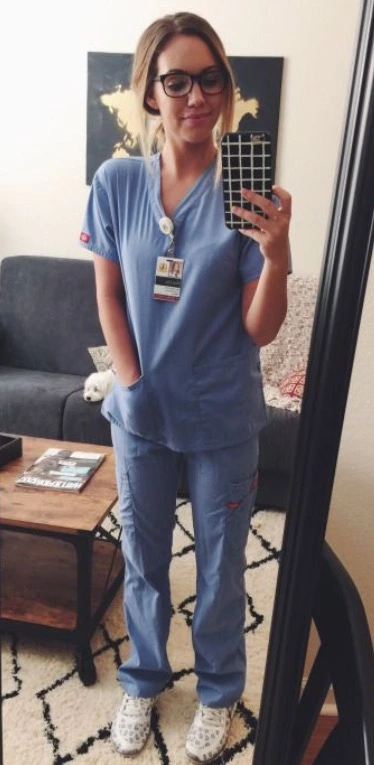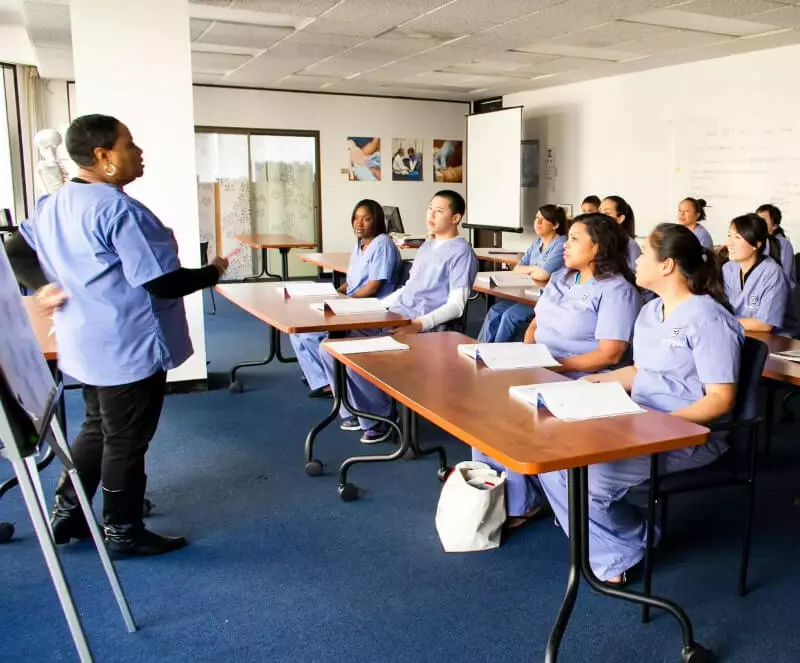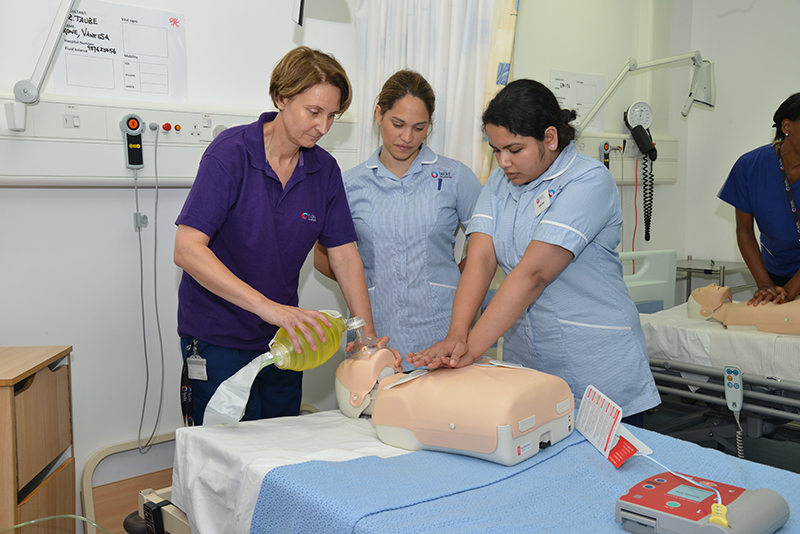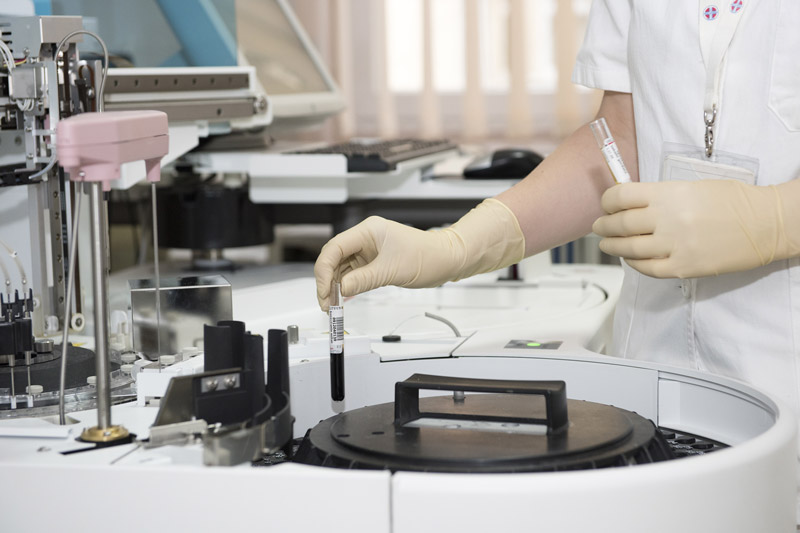Table of Contents
- How long is the program?
- Heads Up! Online schools
- What MA course is like?
- Anatomy, Physiology and CPR
- Medical office administration
- Cardiopulmonary system and electrocardiography
- Bookkeeping and medical financial principles
- Medical business management
- Medical risk management
- Laboratory procedures and clinical assistant
- Externship
There are thousands of medical assisting programs at community colleges and technical schools throughout the country. Each has its own individualized curriculum and may structure their program differently.
However, all upcoming MAs must learn the same basic skills in order to succeed.
Depending upon your school and individual preferences, you may attend daily, Monday through Friday. You could also have a different schedule, e.g. on weekday afternoons, or after work on weeknights, so you can keep working full-time.
If you’re looking to get into the healthcare industry then medical assisting is the perfect stepping stone. The good news is that they’re no formal educational requirements, meaning you may get a job without going to school.
The bad one, like with any other industry many employers prefer to hire people with years of work experience or someone with a certificate.
Although, theoretically it’s possible to learn the skills on the job – you need the job in the first place. Having a credential on hand greatly increases your chances of getting employed.
How long is the program?
When it comes to medical assisting there are pretty much two educational paths you can take:
- Certificate/diploma (9-12 months)
- Associate’s degree (24 months)
Some programs will award you with a certificate or diploma after completion, while others offer an associate’s degree, in which case you can continue on with a bachelor’s degree should you decide to get more out of your career.
As you start researching options for MA courses near you, you will quickly notice that most of them take about one or two years to complete. If you’re looking for a quicker route you might want to consider an accelerated program that will get you out in less time, usually 3-6 months.
But as with everything in life, if it sounds too good to be true, chances are it probably is. Make sure you go with your eyes open when you choose this path otherwise it could cause you a lot of headache and frustration down the road. Beware that:
- Because of their fast-paced nature they tend to be more rigorous and intense. So not the best choice for those who think they lack discipline and drive.
- Owing to squeezed curriculum, instructors may change the content to their liking and skip material they deem unnecessary.
- Accelerated programs may not be available where you live.
- Less flexible. Your schedule might be like 5 days a week 7am-5pm, making it more difficult to balance your work (full-time, part-time) and program.
Heads Up! Online schools
And then there is the other option – online schools. Some of them, so called diploma mills, are outright scam lurking around for an unwitting victim to fall prey to their hollow promises, but some of them could be just poor quality.
Online education per se is not a bad thing and can be quite helpful when done right, the problem are the for-profit schools. To maximize their profit they don’t shy away from dodgy marketing tactics and schemes.
They know all too well that ease of use and convenience is a great reason to choose one product over another – just say the magic words “cheap and fast” and you have a lot of fish in the net.
And as if that wasn’t bad enough, many of them don’t care as much about your education as they do about your pocket. The result is a bunch of poorly trained pseudo MAs heading out into the world looking for jobs and wondering why they can’t find them.
Don’t be one of those people, do your homework and be cautious about where you enroll, be it online or traditional way. When it comes to quality education, it’s well worth the time.
If you’ve made up your mind to pursue an online program the first and foremost step is to check whether the course or school is accredited. To do so, head over to ope.ed.gov and type in the name of the school or visit our school directory.
It’s also worth pointing out that because of the clinical nature of medical assisting, online classes will likely not be available for the majority of the programs. And it stands to reason because the only way to acquire essential skills such as injections, phlebotomy, doing EKGs, PFT’s, taking vitals etc. is to learn them hands-on.
Some MA programs may provide a blended mode where the theoretical part of the curriculum is available through online learning experience.
What MA course is like?
Most MA programs require you to dress like a medical assistant, similar to what you would actually wear on the job. This means wearing the school provided scrubs uniform, and white tennis shoes.

You’ll find that schools generally keep classes relatively small (10-15 students), because of their hands on nature. Courses may be arranged in a modular structure, or in a more traditional manner.

You are expected to read your assigned textbook readings and often must complete the assignments included in the text.
Each week you can expect a test on the concepts learned, with a final exam at the end of the course. The classes you take during your training may vary.
Anatomy, Physiology and CPR

One of the building blocks of a medical assistant education is the Anatomy, Physiology and CPR (Cardiopulmonary resuscitation) class.
While it may be called something different at each school, most MA programs ensure that their students learn the basics of anatomy and physiology, as well as become certified in CPR rescue techniques.
During this class you’ll learn about the different systems of the body and how they work together. You may also learn basic pharmacology where you’ll learn all about medication and how they affect the body systems, dose calculations, generic names of commonly used drugs etc.
The latest CPR techniques for medical practitioners will also be taught. This includes defibrillation and breathing masks, as well as the basic CPR certification.
Medical office administration
The most common task of a medical assistant is the administration of the office. Everything in this unit is designed to introduce you to the medical office and get you comfortable in that environment.
In this class you’ll learn important skills like Medical Records handling, scheduling, checking patients in and arranging appointments with patients and specialists.
Your instructor will likely teach the proper procedures for maintaining patient privacy and meeting HIPAA guidelines.
Expect to role play with classmates to get accustomed to the procedures of a medical office. You’ll go through the entire process of a patient visit.
You and your classmates may be assigned various roles, including receptionist, back office, patients, and other providers. For example, you may be asked to play the role of either a patient or a receptionist scheduling appointments over the phone for either new or existing patients, or an emergency situation.
Cardiopulmonary system and electrocardiography
This class teaches about the components of the cardiopulmonary system, including the heart and lungs. If CPR was not taught previously, it will most likely be taught in this class.
You will also learn how to perform electrocardiographs, which are commonly known as EKG. This may include both a non-stress and stress type of testing.
You may learn how to instruct patients how to use the portable Holter monitors, as well.
The medical conditions caused by illness or injury to the heart and lungs will be taught, as well as basic medications and procedures used by physicians to treat these conditions.
A section on nutrition and maintaining proper heart health may be included in this unit. This can include lessons on counseling patients on their diet and exercise.
Teaching ways to quit smoking and maintaining a proper weight are often taught in this unit, as well.
Bookkeeping and medical financial principles
During this unit, you will learn about the various types of insurance, how they are billed, how to properly prepare a superbill, as well as diagnosis and procedure codes.
Ensuring that the patient’s health plan covers the visit and how to properly refer a patient to a specialist, are also vital skills that will be learned.
Proper billing and coding procedures are vital to the medical practice, as they are the source of income for the business.
Medical billing and coding is also an entire career in itself, allowing some medical assistants the opportunity to create their own business.
Medical business management
While medicine is a business, there are different rules and procedures that are unique to the health care field.
Learning how to properly manage a medical office is a necessity, if you want to advance to more senior roles, such as office manager or department head.
During this unit, you’ll learn about the various roles within the medical office and how the business of medicine is structured.
You will learn human resources and communications skills necessary for running a successful medical practice such as:
- hiring a new employee
- conducting a job interview
- dealing with employee discipline issues
- even the the process of firing when necessary
You will also learn effective techniques for dealing with the different personalities that you will encounter in the medical office.
The unit will teach you the skills needed to open a new practice, or close the practice for a physician who is retiring.
In addition to that, expect to acquire important networking skills to effectively connect with other health care professionals at various medical offices and clinics, how to run a medical office for a small practice and for a large one.
The different types of clinics and health care offices, including specialists and urgent care clinics will be taught, as well.
Medical risk management
During this unit, you will learn the laws and procedures that you will need to know to protect yourself, your patients, and your employer. Your instructor will teach you patient privacy, proper charting methods.
HIPAA, CLIA and other laws at the state and federal level that apply to health care will be covered.
This unit will also equip you with the knowledge when it’s not appropriate to comment on certain information in front of the patient and when you are legally mandated to report certain events.
Laboratory procedures and clinical assistant
This class will focus on the procedures you will use in the back office while working as a clinical medical assistant, it includes:
- escorting the patient to the room
- performing checks of vitals
- drawing blood (Phlebotomy)
- collecting various samples for the laboratory
- giving injections
You may learn how to perform specific laboratory procedures, such as hematocrit, urine tests, and separating blood and plasma.

There will be classes that are not for the faint-hearted like drawing blood and giving injections to other students. It will be expected of you to also allow your classmates to inject and draw blood from you.
Blood samples are small, usually no more than a tube or two, and injections are saline.
While it is natural to feel squeamish during this unit, this is generally one of the most important units for you to pass to become a medical assistant.
You will learn to ensure that guidelines are followed and all safety precautions are taken to protect yourself, your classmates, and your patients from infectious diseases and blood borne pathogens.
Externship
The externship or internship is usually an unpaid 3-6 week program where you work 40 hours a week in an actual doctor’s office.
Depending upon whether you are a back office, a front office, or both, your externship will be in the area that you are specializing in.
For programs where you learn both front and back office, your externship will likely be three weeks in the front office, and three weeks in the back office.
During your externship you will get hands on experience working with real patients. All of the skills you have learned during your medical assisting education will be utilized during your externship.
Your skills will be evaluated, the onsite supervisor will report your progress and give your school representative a grade for your externship.
The externship is vital to your MA education. It should be treated like an actual job, and can sometimes lead to being hired by the extern site.
While each medical assistant program is different, all accredited programs adhere to the legal guidelines for MA training in your area. The guidelines for your state may vary, as to what classes you must take and what certifications you will receive.
Reading your program’s course catalog is a great way to prepare yourself for the classes that you will take during your education.
Media attribution:
medical assistant training skills by www.bamasf.com